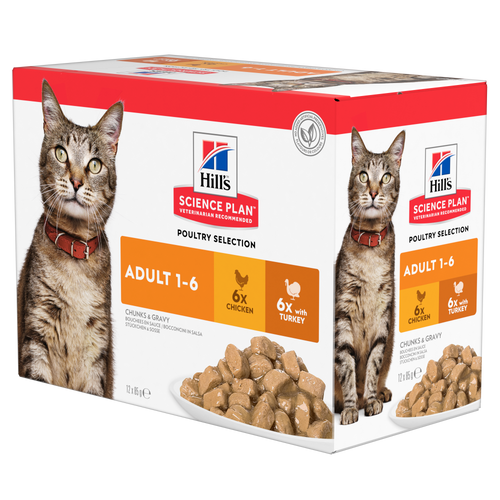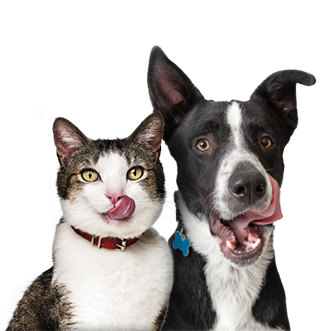
-
Find the right food for your petTake this quiz to see which food may be the best for your furry friend.Find the right food for your petTake this quiz to see which food may be the best for your furry friend.Featured products
 Puppy Food
Puppy FoodHill's Science Plan Puppy Multipack Wet Dog Food with Chicken & Beef are complete premium pet foods for growing puppies from weaning until 1 year old and for pregnant and nursing dogs. Your puppy will love these deliciously smooth and savoury minced loaves, formulated for balanced nutrition and overall health.
Shop Now Adult Wet Dog Food with Beef
Adult Wet Dog Food with BeefHill's Science Plan Adult Multipack Wet Dog Food with Chicken, Beef & Turkey are complete premium pet foods for adult dogs from 1 year. Your dog will love these deliciously smooth and savoury minced loaves, formulated for balanced nutrition and overall health.
Shop Now Mature Adult Dog Food
Mature Adult Dog FoodHill's Science Plan Mature Adult Multipack Wet Dog Food with Chicken & Beef are complete premium pet foods for mature adult dogs from 7 years. Your dog will love these deliciously smooth and savoury minced loaves, formulated to deliver the appropriate amount of energy to support the needs of adult dogs.
Shop NowFeatured products Adult Multipack Wet Cat Food with Beef, Ocean Fish & Chicken
Adult Multipack Wet Cat Food with Beef, Ocean Fish & ChickenTender chunks in gravy for cats, with high-quality protein to maintain lean muscle. With vitamin E and omega-3s & -6s for healthy skin and balanced minerals to support healthy vital organs.
Shop Now Mature Adult Wet Cat Food with Chicken
Mature Adult Wet Cat Food with Chicken
Tender chicken chunks in gravy for mature adult cats. Made with easy-to-digest ingredients, high-quality protein for lean muscle maintenance and antioxidant vitamins C+E for optimal health.
Shop Now Light Adult Multipack Wet Cat Food with Chicken & Ocean Fish
Light Adult Multipack Wet Cat Food with Chicken & Ocean FishTender chicken chunks in gravy for cats, with L-carnitine and fewer calories for ideal weight management. Packed with high-quality protein, omega-6s, and vitamin E for shiny fur and healthy skin.
Shop Now -
Dog
- Dog Tips & Articles
-
Health Category
- Weight
- Food & Environmental Sensitivities
- Urinary
- Digestive
- Joint
- Kidney
-
Life Stage
- Puppy Nutrition
- Adult Nutrition
- Senior Nutrition
Cat- Cat Tips & Articles
-
Health Category
- Weight
- Skin & Food Sensitivities
- Urinary
- Digestive
- Kidney
-
Life Stage
- Kitten Nutrition
- Adult Nutrition
Featured articles The Incredible Science Behind Your Pet's Microbiome
The Incredible Science Behind Your Pet's MicrobiomeLearn what your pet's microbiome is, how it contributes to your pet's gut and overall health, and why nutrition is important in maintaining healthy microbiomes.
Read More The Right Diet For Your Pet
The Right Diet For Your PetIn people, the right diet is very important. If you are eating the wrong way for your metabolism, activity level, age and lifestyle you could end up with health issues.
Read More Show some love with wet foods: a great choice for pets with health issues
Show some love with wet foods: a great choice for pets with health issuesShow some love with wet foods: a great choice for pets with health issues.
Read More -


When you have an itch it just drives you mad doesn't it? If you can’t quite reach it it soon becomes the only thing you can think about. It’s one of the things we empathise most easily about when it comes to our cats and dogs. Having a dog or cat that is always scratching or licking itself can be upsetting for us as owners as well as for our pets. Many of my clients who share their bedrooms with their cat or dog have been miserably sleep deprived because of the constant scratching noises and fidgeting. If your cat or dog is losing fur, balding, or seems to have a skin condition it could be an allergy to something. Allergies are not as common as some people might think so your vet will want to rule out the more common things first. We have an article on those things here.
The most common allergic skin disease in dogs and cats is called atopic dermatitis or atopy. This usually starts from the age of six months onwards and you might notice your dog or cat itching and scratching, head shaking or chewing and licking themselves excessively. You might see bald patches, red skin and in many cases the pets damage their own skin because they scratch so much. The skin can get a secondary infection once the trauma starts and this can make the itching worse in a vicious circle of inflammation.
Atopy is a reaction to things in the environment and it can be one or many things. The most common sensitivities we see are to things like dust and food mites, pollen, trees, grasses and so on. Quite a few cats and dogs will be itchier in summer when the meadows are in full bloom. Others will itch all year if for example something like dust mites are involved.
Atopy can be difficult to diagnose and costly to investigate and treat so be patient with your vet while they do a thorough job to see how best to help your itchy cat or dog. Once other causes have been ruled out they might want to do other tests to find out what your pet is allergic to. Skin tests for example are an important step before so-called 'hyposensitisation. They can then discuss medication, omega oils that may help, shampoos, avoidance of allergens and also hyposensitisation. Hyposensitisation is where a specific mix of allergens is tailor-made for your dog or cat and they have increasing doses given by injection over weeks and months. This can stop atopy in some animals and may help reduce how much medication they need if a complete resolution isn’t achieved. Your vet may also give a short course of steroids to stop the itch-scratch cycle and give your dog or cat, and you, some relief. Antibiotics might be used if there is infection.


Tasty Tips
Young pets may need several visits in their first year for vaccinations. Adult pets generally benefit from annual check-ups, while senior or special-needs pets might require more frequent visits.
After atopy we need to talk about food allergy. We prefer to call these adverse food reactions because most reactions and sensitivities to food are not true allergies. This doesn’t make much difference to your pet because the reactions and things to avoid are the same. True food allergies are most often to a part of the proteins in that food. The most common foods causing allergic reactions in dogs are beef, dairy, chicken and wheat and in cats, beef, chicken and fish. Don’t forget as well that your pet could have both atopy and food allergy.
The signs are much the same as in atopy but won’t be seasonal if the food is always being fed. In some cases the areas of the body that are most itchy vary between atopy and food reactions but this isn’t set in stone. If your vet is suspicious that food is a cause they will want to do a food exclusion/elimination trial. This may take between 4 and 12 weeks to be conclusive and it is absolutely imperative that you stick to the regime. Usually the easiest way to do a food trial is with a special dietetic food. These will be foods that either only have proteins that are cut down into such small pieces that the body doesn't react to them anymore (called protein hydrolysation) or includes proteins that your pet has not eaten before (called a 'novel protein food'). If, after several weeks your pet is miraculously better you can challenge them with different protein sources one at a time to find the culprit(s). Many owners are so relieved that the itching has stopped they may just stick with the special food. There are also blood tests that may provide some more insights as to what food allergy your pet may have. A food elimination trial as we talked about before is the best choice to do this.
Another type of reaction we see is contact dermatitis. This is where an animal comes into contact with something that either causes an allergic reaction or damages the skin. This could be things like running through nettles or reacting to a certain washing powder used on bedding.
Itching and scratching can drive our pets and us mad but with dedication from you and your vet team hopefully you will all get some relief.


One of our staff authors prepared this article for you
Related products

Tender chunks in gravy for cats, with high-quality protein to maintain lean muscle. With vitamin E and omega-3s & -6s for healthy skin and balanced minerals to support healthy vital organs.

Tender chicken chunks in gravy for cats, with L-carnitine and fewer calories for ideal weight management. Packed with high-quality protein, omega-6s, and vitamin E for shiny fur and healthy skin.


Tender chicken chunks in gravy for mature adult cats. Made with easy-to-digest ingredients, high-quality protein for lean muscle maintenance and antioxidant vitamins C+E for optimal health.
Related articles

Show some love with wet foods: a great choice for pets with health issues.

To make a protein, amino acids are linked together in a long chain. The chain is then bundled into to a three-dimensional structure, like a tangled ball of yarn.

Learn what your pet's microbiome is, how it contributes to your pet's gut and overall health, and why nutrition is important in maintaining healthy microbiomes.

In people, the right diet is very important. If you are eating the wrong way for your metabolism, activity level, age and lifestyle you could end up with health issues.

Put your pet on a diet without them knowing
Our low calorie formula helps you control your pet's weight. It's packed with high-quality protein for building lean muscles, and made with purposeful ingredients for a flavourful, nutritious meal. Clinically proven antioxidants, Vitamin C+E, help promote a healthy immune system.
Put your pet on a diet without them knowing
Our low calorie formula helps you control your pet's weight. It's packed with high-quality protein for building lean muscles, and made with purposeful ingredients for a flavourful, nutritious meal. Clinically proven antioxidants, Vitamin C+E, help promote a healthy immune system.

